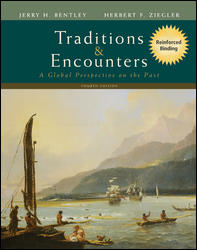1 A) abundant and accessible coal deposits. B) local sources of raw cotton. C) abundant skilled and unskilled labor. D) access to water transportation. E) sources of capital for investment. 2 A) it was rare and considered a luxury. B) it was comfortable and convenient. C) it was a British product and so considered patriotic. D) it lasted longer than wool. E) All of the answers are correct. 3 A) lowered transportation costs. B) linked industrial centers with overseas resources. C) Facilitated the movement of people as well as goods. D) facilitated delivery of manufactured products to consumers. E) All of the answers are correct. 4 A) the flying shuttle. B) the steam-driven spinning "mule". C) chemical dyes. D) the power loom. E) the cotton gin. 5 A) better working conditions than piecework done at home. B) better pay for skilled work. C) greater opportunities for advancement within a free market system. D) harsh discipline and close supervision. E) an opportunity to families to work together. 6 A) cheaper manufactured goods. B) lower quality manufactured goods. C) fewer choices in manufactured goods. D) manufactured goods priced beyond the means of many consumers. E) acute shortages of many manufactured items. 7 A) the relative freedom of the factory system. B) the segregation of men and women in the workplace. C) the absence of children in the workplace. D) the rigid timetables of industrial work. E) All of the answers are correct. 8 A) iron works B) pottery C) railroads D) steel works E) textiles 9 A) sabotaging the efforts of their competitors. B) forbidding the export of machinery and expertise. C) constant innovation and renovation. D) significant government support of industry. E) All of the answers are correct. 10 A) Britain. B) Canada. C) France. D) Germany. E) United States. 11 A) the limited liability for investors. B) the possibility for government-sponsored monopoly. C) the ability to remain flexible and small-scale. D) the opportunity to improve the standard of living of many more workers. E) All of the answers are correct. 12 A) Standard Oil's control of all phases of petroleum production and distribution. B) B. Krupp's integration of mines, steel mills, and munitions plants. C) British East India Company's monopoly on the tea trade. D) U.S. Steel's control of mines, steel mills, and railroad manufacture. E) All of the answers are correct. 13 A) improved transportation networks resulted in cheaper food and therefore better diets. B) families did not yet know how to limit the number of births. C) new urban centers were healthier environments than rural villages were. D) aggressive public health programs eradicated childhood diseases. E) All of the answers are correct. 14 A) raising children was more expensive in an industrial society than in an agricultural one. B) declining infant mortality meant that more of the children born were likely to survive. C) improved health and nutrition reduced overall death rates. D) married couples actively practiced birth control. E) All of the answers are correct. 15 A) famine in Ireland. B) Difficult political, social, and economic circumstances in Europe generally. C) unemployment in Britain. D) anti-Semitism in Russia. E) economic opportunities in the United States. 16 A) substantial social and political gains by women. B) equal participation of men and women in the industrial economy. C) gendered division of labor and space. D) children leaving school to work in the mills at an early age. E) All of the answers are correct. 17 A) all children were required to attend public school. B) poor children were forced to do piecework at home. C) children spent more time away from their parents than when they had been working. D) working class parents were obliged to find childcare. E) All of the answers are correct. 18 A) the trade union movement would force industry to accept social reforms. B) the most equitable and just society could be found in an industrial commune. C) the bourgeois class needed to exercise responsibility toward their workers. D) democracy had failed because most workers did not understand their true interests; a dictatorship would serve them better. E) only a communist revolution would change the abuses of capitalism and create a just and equal society. 19 A) treated trade unions as illegal organizations. B) supported business and prosecuted strikers. C) passed laws restricting child labor. D) extended the vote to the working class. E) All of the answers are correct. 20 A) constructing the Trans-Siberian Railroad. B) supporting steamship companies and establishing nautical schools. C) encouraging foreign investment. D) reforming commercial law and protecting infant industries E) setting minimum wages for Russian workers.





